We always enjoy exploring the dishes and recipes of Southeast Asian cuisines. From Laos to Thailand to Vietnam (and beyond), each cuisine offers an incredible diversity of taste brought into harmonious balance with one another.
Som tam, however, might actually take this “balancing” characteristic one step further, and it all starts in the region from which it comes.

Som Tam and the Isaan Region
While it is indeed very popular throughout all of Thailand and in Thai restaurants around the world, it’s a bit misleading to label som tam as a “Thai” dish. In fact, it would be misleading to broadly call any dish just Thai to begin with.
More broadly, it’s perhaps more accurate to ascribe any given recipe to one of the four main Thai regional cuisines: Northern, Central, Southern, and Isaan.
Each region’s different cuisines vary greatly because of their underlying geography and the countries neighboring each one. In the North, for example, you might have slightly more Chinese and Burmese influences, whereas Southern Thai cuisine – and its abundant use of coconut milk – draws inspiration more from Malaysia and Indonesia.
Originally as an Isaan dish, som tam in its truest form draws on many Lao and Cambodian principles.
History of the Isaan Region
To understate things, the direction of the Isaan culture has been largely influenced by its geography.
While we’re not going to begin from the true prehistoric beginnings for the region, just know that Isaan is home to some of the earliest traces of human history. From the skull fragments of Homo erectus species (our ancestors) to the Pha Taem cliff paintings to tools largely thought to come from the Bronze Age, the Isaan province provided one of the earliest beds of development for human civilization. Even the name Isaan derives from an old Pali word for “northeast”… and Pali has been considered a dead language since the 1st century BC.
More closely in our modern age and the last two millennia, the Isaan region has had a long history of effectively “kingdom hopping.” Located in the fertile Korat Plateau centrally located between modern day Laos, Cambodia and Thailand, the region proved to be a worthy prize for established and newly arising kingdoms alike.
Since the 11th century, the Isaan region has belonged to the Khmer Empire (modern day Cambodia), the Sukhothai (Thai) Kingdom, the Lan Xang (Lao) and finally part of Siam soon-to-be Thailand.
If you like this papaya salad, you might also like our other recipe on Cucumber Salad or Cold Beet Soup, or a refreshing buzzy watermelon drink.
Effect on the Isaan Ahan
Culturally speaking, despite having been under the control of Siam/Thailand since the mid-1750s, the Isaan culture is more historically tied to older Lao traditions than what you might consider as “umbrella Thai.” Interestingly, the most prevalent language spoken in Isaan is actually more closely a dialect of Lao than Thai… even today.
In terms of its food, the Isaan ahan (Isaan food) is commonly associated more so with Lao cuisine in two particular ways. First, the Isaan eat a more sticky, glutinous rice alongside their meals whereas other regional Thai cuisines prefer a finer, non-glutinous rice grain like jasmine rice.
Second, the Isaan cuisine is very well known for its spicy, sour and pungent ingredients. Ingredients like preserved fish (bla rah), brined crabs (bu tem), olives and tamarind juice are more commonly used in Isaan than anywhere else in Thailand. In som tam’s case, while the popular modern-day recipe calls for a sweeter palm/coconut sugar element, the original Isaan version included no sugar at all.
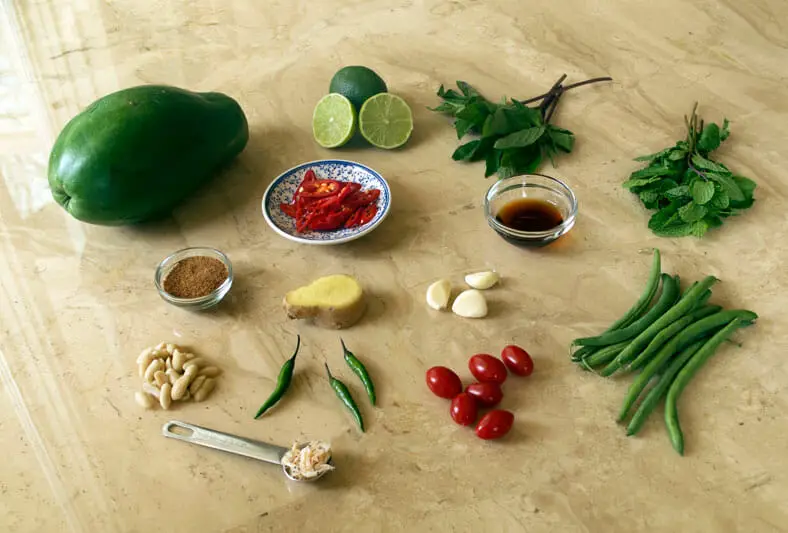
About the Recipe
Before diving into the simplicity for preparing this astoundingly fragrant salad, it’s perhaps helpful to dive deeper into the name som tam itself. It will, if anything, give us a clue of what’s ahead.
The original name for som tam was tam bak hoong in the Isaan Lao-dialect. The word bak hoong means “papaya” while the word tam means “pounded.” As Isaan workers migrated to Bangkok and the popularity of the dish spread throughout Thailand, the dish name evolved into a more “Thai-ized” som tam, where som means “sour.” Som tam, therefore, literally means “pounded sour.”
From both variations of the name, you get the basic gist about how to prepare this dish… at least in the most conventional of senses.
The easiest way to start preparing som tam is to begin with your sour dressing. You’ll start by pounding together your aromatic ingredients like ginger and Thai chilis, preferably in a mortar and pestle. As you pound and combine the flavors together, you’ll progressively add further ingredients to the mixture. The som tam will get a lot of its spicy taste from dried shrimp and fish sauce, which both go into the pounded mixture once the aromatics have been combined together.
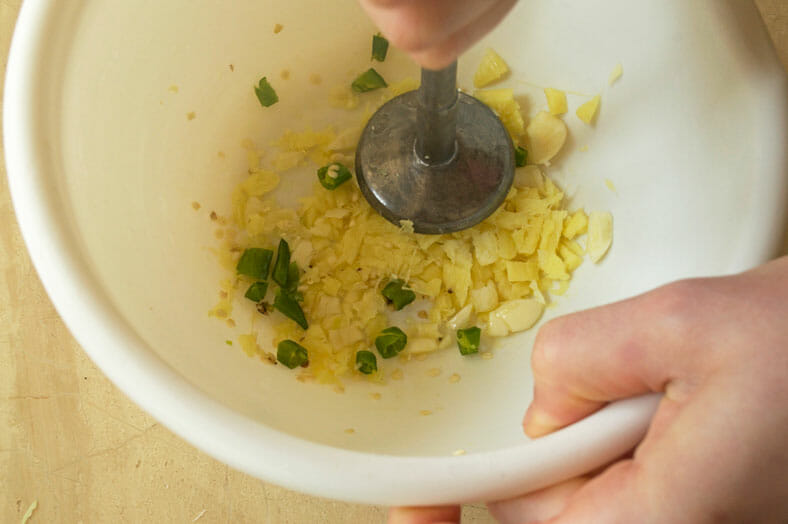
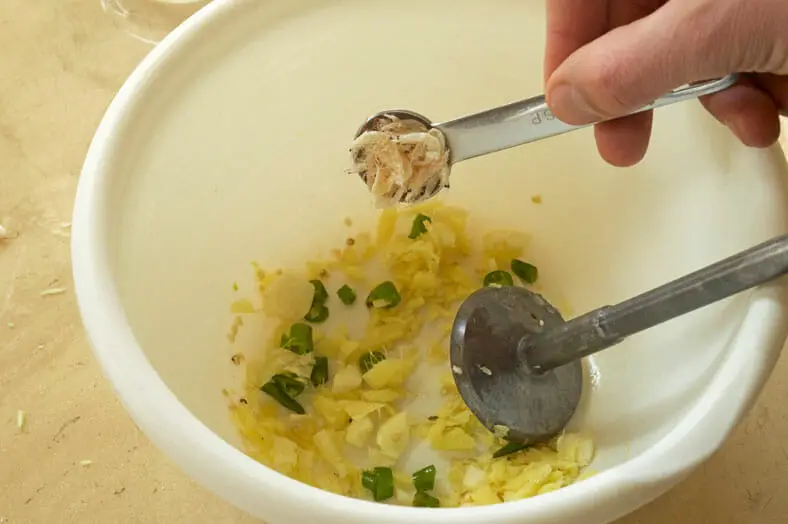

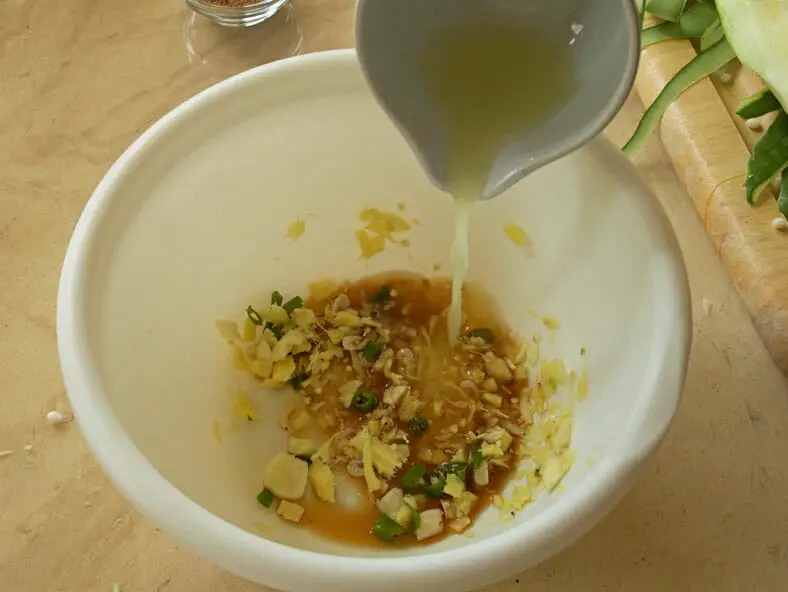
Next, while it is not most traditionally Isaan, most versions of som tam will then add either coconut or palm sugar into the dressing. The underlying rationale here is to provide a balance of sweet to the sour, an element that isn’t included in the original recipe. Nevertheless, it does work really well in som tam to have a slightly sweeter taste.

With the base of your som tam dressing complete, you can start to add your other ingredients to mash into the dressing. Depending on the recipe, you might find all sorts of added vegetables into som tam, although things like basil, cherry tomatoes and green beans are more common than most. Regardless of what you put in, mashing and pounding the ingredients into the sauce helps incorporate their flavors into the overall salad.
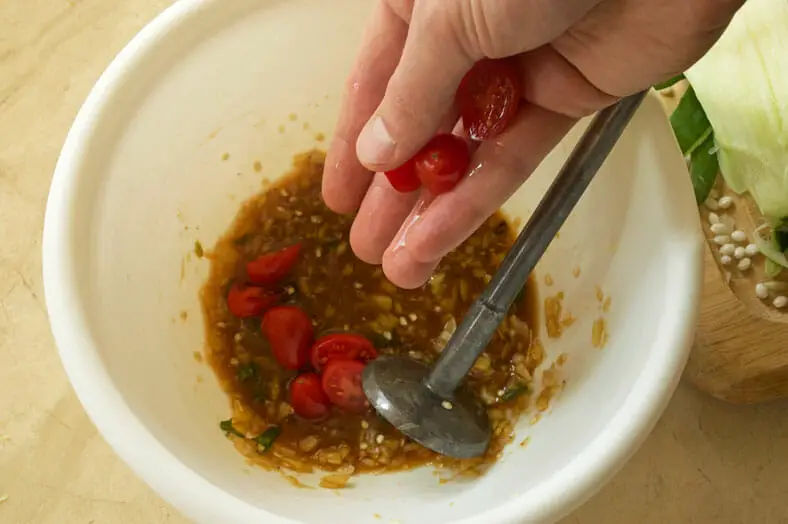


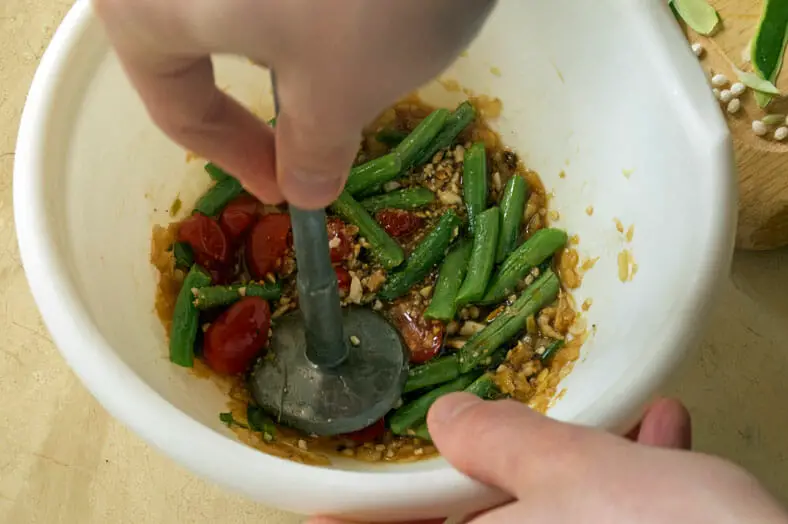
And now we come to the coup de grace: the papaya. For som tam, the best type of papaya you can use is a green, fully unripe papaya. While ripe papayas have a sweeter, fruitier taste, unripe green papayas carry a very mild – even borderline bland – taste to them. The reason why this is so preferable for som tam, however, is because of the powerful sauce that you’ve just made.
To get your papaya fully “som tam ready,” you’ll want to grate it in the traditional way for this recipe. First, you start by peeling the skin off your papayas, then you’ll want to place the papaya in one hand with a cleaver or a heavy chopper in the other. Being mindful not to inflict any pain on yourself, make tiny hacks into and around the outer layer of the papaya. The goal will be to get a sort of thin matchstick shape from your papaya, so keep each cut into the papaya close to one another.
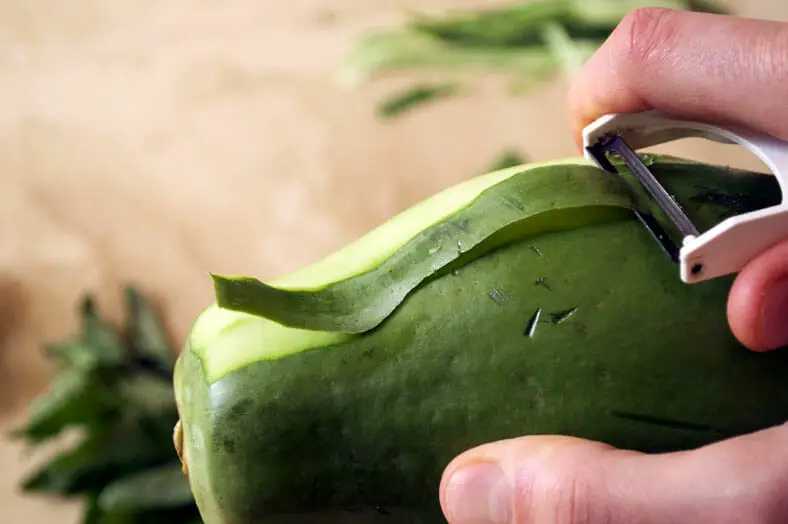
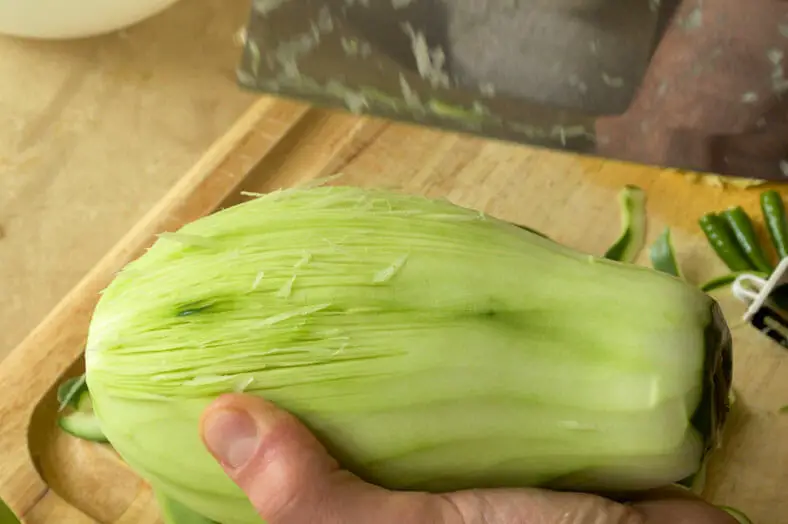


Once you’ve effectively hacked your way through the papaya, take your cleaver and slide gently down the papaya. If you’ve hacked well into your papaya, little matchsticks should fall easily off and into your bowl. It might take a while to get the hang of, but it becomes very easy (and highly satisfying!) once you do.
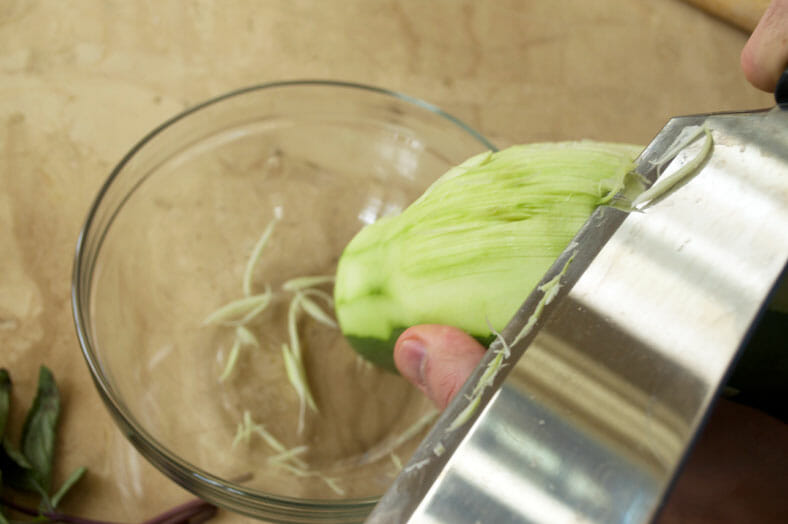
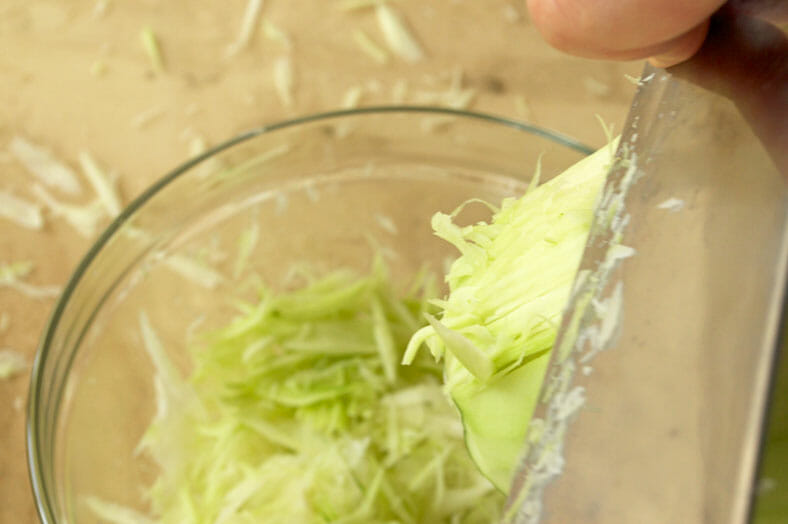
With your papaya in tow, add it to your bowl of som tam sauce and mash everything together. You want to mash the papaya well in order to work the sauce into the papaya itself and to disperse the rich flavor as much as possible.
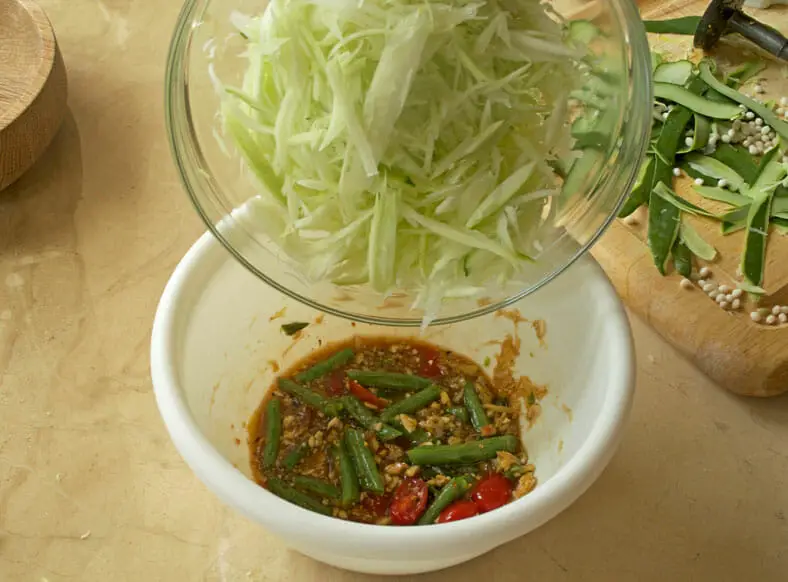

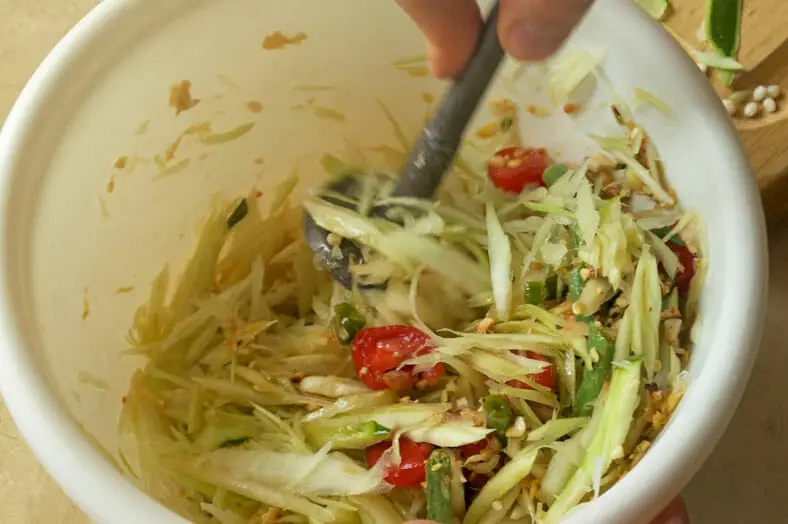
Our Take on the Recipe
Taking the impassioned lead from our original resource recipe, we didn’t make too many adjustments that would have taken us out of the “authentic zone.”
While there are many different variations of som tam, we opted for the most recognizable mainstream som tam Thai version that you might find (and that we’d found in our own travels to Thailand) just about anywhere.
In making a som tam Thai, we went ahead and made roasted peanuts, dried shrimps, Thai chilis and a sweeter component part of the equation. Instead of using palm sugar, however, we opted for coconut sugar simply because it’s our preferred sugar for most everything we make here on Arousing Appetites.
For the peanuts, we did buy ours raw and roast them ourselves, but this was more a personal preference than anything else. At least when we buy them raw, we know how they are roasted. Some brands out there roast with less than savory vegetable oils, which is just something we try to avoid in our own kitchen. Peanut is a staple in many Southeastern cuisines, such as the famous peanut dipping sauce for fresh spring rolls from Vietnam.
Even though we’re clearly “swimming upstream” from our more knowledgable resource recipe, we’d seen in our own travels throughout Thailand various places garnish their som tam dishes with fresh herbs like Thai basil and mint. Just to add more freshness and flavor to the dish – though, not that it needs it – we opted to add some final fresh garnishes at the end.
Other than that, for a dish that’s already so delicious and fragrant as is, there are few changes that would really elevate som tam Thai to a higher level than it already is.
Couple the fact that it’s so simple to make and healthy, and som tam is a true winner across the board. It’s such a refreshing summer treat to eat a salad like this besides boring greens and romaine lettuces all the time!
Which reminds us, definitely try our cucumber salad recipe with yogurt dressing, or a refreshing summer treat – a watermelon drink from Tonga. If you prefer having some kind of meat with your salad, which I sometimes do, this Laotian salad made with shredded pork (laap muu) is a very interesting protein to have on your salads other than boring things such as steak tips or chicken breast!
Enjoy!
What type of som tam do you make? Comment below!
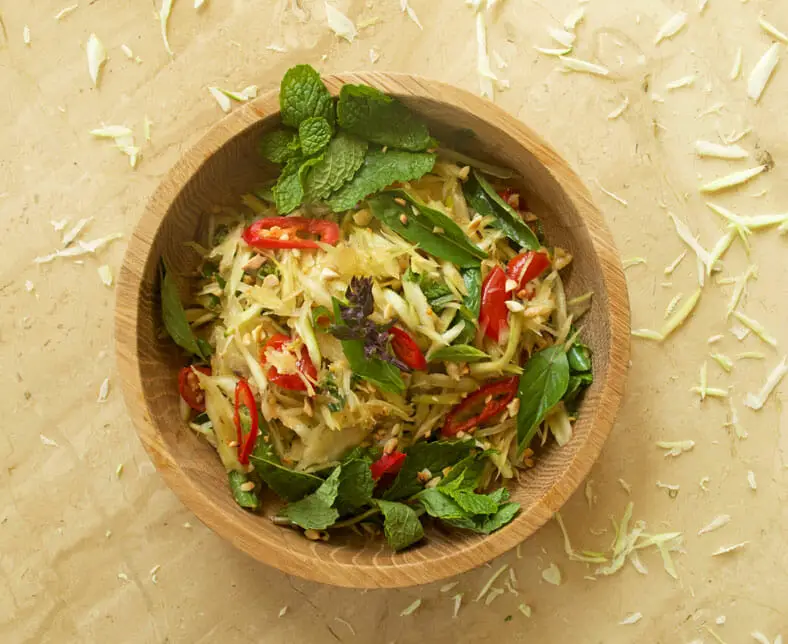

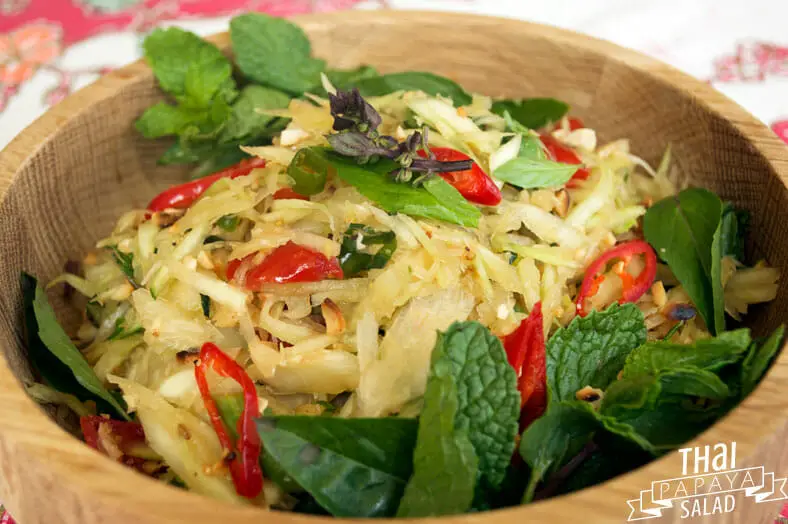
This is the second Papaya recipe I saw today! It must be telling me something….and fish sauce, ginger, coconut sugar all remind me of cooking in the Philippines. We have a Filipino salad called atchara and seems to be similar to this but without the spicy kick. Yum!
It’s definitely a sign, Manila Spoon… time to eat some papaya 🙂
That’s awesome about atchara. Do you have a recipe for it that you could link us to? We’d love to have a look at it!
I don’t have one personally but I believe there are lots online. 🙂
I loved having this salad in Thailand. A couple of tips – if you can’t find an unripe papaya, a cucumber works well (just don’t mash it too much). Also – if you search ‘Kiwi Pro Slice Peeler’ on amazon, there is a great shredder available for less than $10 and it is the same as the ones I saw in the kitchens in Thailand. It makes life so much easier than the hatchet hack!
Wow, those are some really great tips! We’re going to give those a try and see how the salad comes out with cucumber as well!
Thai food is my food! Always enjoy a great pad thai but have never tried making it myself! Thanks for the recipe. -Dana
You’re most welcome, Dana! A good pad Thai is pretty amazing too, and if anything som tam can be a nice light accompaniment to it!